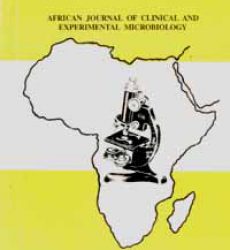1Medugu, N., *1Adegboro, B., 2Babazhitsu, M. S., 3Kadiri, M., and 4Abanida, E. A.
1Departments of Medical Microbiology and Immunology, Nile University of Nigeria, Abuja, Nigeria
2Department of Medical Microbiology and Parasitology, Faculty of Basic Clinical Sciences, College of Health Sciences, Usmanu Danfodiyo University, Sokoto, Nigeria
3Department of Medical Microbiology and Parasitology, University of Ilorin Teaching Hospital, Ilorin, Nigeria 4Epidemiology Unit, World Health Organization, Harare, Zimbabwe
*Correspondence to: boazadegboro@gmail.com
Abstract:
Lassa fever, a viral hemorrhagic fever caused by the Lassa virus (LASV), is endemic in West Africa and is associated with high morbidity and mortality. At least three of the four proposed seven lineages of LASV are found in Nigeria, where the multimammate rat, Mastomys natalensis, serves as the primary reservoir. Endemic countries report approximately 200,000 infections and 5,000 deaths annually, with Nigeria experiencing thousands of infections and hundreds of deaths including healthcare workers. The aim of this review is to provide scientific information for better understanding of the evolutionary biology, molecular epidemiology, pathogenesis, diagnosis, and prevention of Lassa fever in Nigeria and other endemic regions worldwide, which can lead to improved control efforts and reduce morbidity and mortality from recurrent epidemics. To achieve this aim, observational studies such as case series, cross-sectional and cohort studies published between December 2017 and September 2022 were searched for on various online databases including Google Scholar, Africa Journals Online (AJOL), Research Gates, PubMed, PMIC, NCDC, and WHO websites. Although the origin and evolutionary history, and the transmission dynamics of Lassa virus have been revealed through recent molecular epidemiological studies, the factors that drive the evolution of the virus remain unclear. Genetic changes in the viral genome may have enabled the virus to adapt to humans. Diagnosis of Lassa fever has also advanced from basic serological tests to more sophisticated methods such as quantitative real time polymerase chain reaction (qRT-PCR) and sequencing, which are particularly useful for identifying outbreak strains. Several vaccines, including recombinant vesicular stomatitis virus (rVSV), virus-like particle (VLP), and DNA-based vaccines, have shown promise in animal models and some have progressed to phase 2 clinical trials. Preventing and controlling Lassa fever is critical to safeguard the health and well-being of affected communities. Effective measures such as rodent control, improved sanitation, and early detection and isolation of infected individuals are essential for reducing transmission. Ongoing research into the genetic and ecological factors that drive the evolution of Lassa virus is necessary to reduce the impacts of Lassa fever. Continue reading “A review of the recent advances on Lassa fever with special reference to molecular epidemiology and progress in vaccine development”

